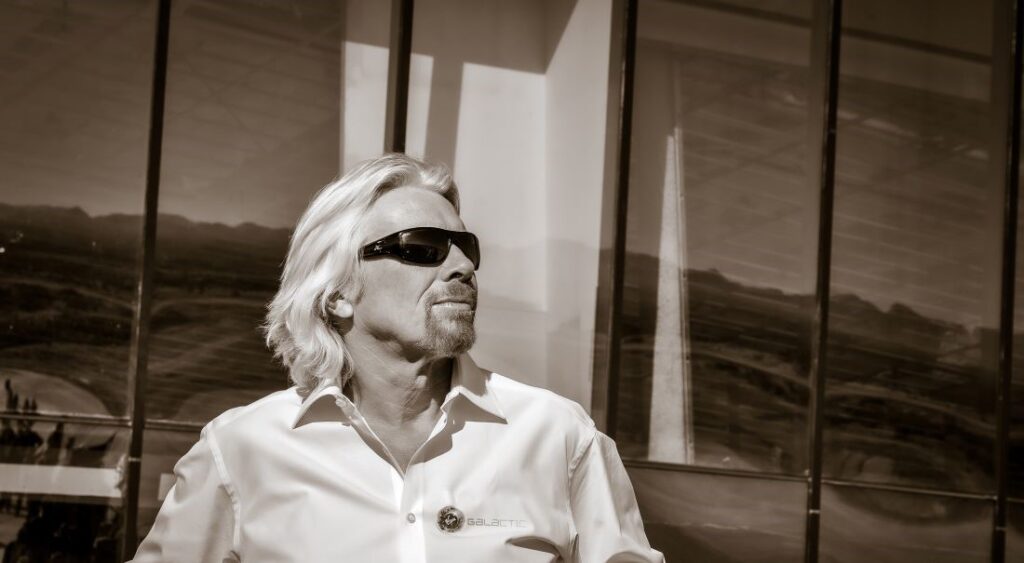This website uses cookies so that we can provide you with the best user experience possible. Cookie information is stored in your browser and performs functions such as recognising you when you return to our website and helping our team to understand which sections of the website you find most interesting and useful.
Super CEO: Rise of the Business Rockstar
By Lysanne Currie | 18 July 2023 | Wealth
Strong CEO positioning strategy is a ‘superpower’ that helps lift leaders and their companies above the competition. But how and where to begin?

Recent research shows that the reputation of a CEO now contributes to a half of an organisation’s overall perception—and around 60% of a company’s market value. With this impact, the traditional profile of a distant, lofty figure of power shrouded in mystery and detached from the world is long gone. Today’s leaders are a new kind of ambassador for their companies, and the most savvy are focusing on their own positioning to augment their impact on business perception, culture — and, ultimately, the bottom line.
So, what exactly is CEO positioning and why is it the ‘new superpower’? Simply put, it is a strategic way of defining and leveraging an executive’s personal brand. It acts as a clear signal to stakeholders and investors – as well as potential new clients – that a CEO is in step with the organisation’s purpose and is someone who ‘walks the talk’. At its heart, it pivots on transparency and authenticity; nearly half of all millennials now expect CEOs to speak out about matters that are important to society, which in turn, influences who they buy from, while 56% of gen Zs – the oldest of whom are now nearing their mid-20s and in the workforce – say they won’t work for a company that isn’t purposeful.
Some of the world’s most notable high-profile CEOs are powerful proponents of careful, strategic positioning, from Warren Buffet and Sir Richard Branson to Elon Musk. And in all cases, an artfully crafted media presence means that these CEOs are perceived widely as much more than just experts in their own narrow fields; they are thought leaders, motivators, communicators and visionaries who are constantly pushing boundaries. At this apex, the power of perception is amplified into one of ‘business rockstars’ — celebrities as much as they are business leaders — but it is one that can have a powerful impact whatever the size of the company or industry.

Strong profile
In many ways, the upswing in mindful CEO positioning is being driven by Gen X, the new cohort of leaders and a forgotten generation, who not only continued the work ’60s boomers began in challenging social norms, but also bridged pre- and post-digital worlds — accelerating the dismantling of stereotypes about what leaders and ‘grown-ups’ could and should be. With this confidence, they are leading the way in a new type of CEO authenticity — one that is direct, personal and impactful — and far from the traditional staged messages of PR or internal comms.
Being purpose and value-driven is the zeitgeist for modern business, with organisations increasingly coming under scrutiny around both from customers and stakeholders alike. As Fast Company writes, “Society and stakeholder expectations for CEOs are higher than ever. They are expected to be purpose- and value-driven, visible, and relatable, especially with millennials becoming a large part of the employee and customer audience…”
Now, the figure who represents a company needs to clearly embody and personify it too —and that means using strategic positioning.

Position of power
Visible alignment with a brand’s values and key messages is crucial — and in 2023, these are most powerfully played out to the widest audience across social media. According to a recent study by the University of Leipzig and the Norwegian Business School, CEO positioning has now become a top corporate priority, owing to a ”rise in the mediatisation of society and organisations”. The study notes that, “CEOs personify and represent their organisations through their visibility in media… in this way their leadership influences perceptions of the organisation among stakeholders – and thereby organisational reputation and performance.”
Part of this strategy is to create a web of credibility and vision, connecting with thought leaders in the same field; for example, via retweets and discussion forums, through writing articles for trade journals, LinkedIn or other media and taking up high-profile speaking engagements.
However, this is just one arm of such a strategy, focused on defining the CEO as a thought leader. It is social media that is the key vehicle through which CEOs can connect directly with stakeholders and show their human side, displaying empathy, honesty and emotional intelligence, all of which lie at the heart of progressive business practice.
This understanding of social media’s importance in conveying a personal narrative that can affect every part of a company is growing. In 2016, only 32% of Fortune 500 CEOs had a social media presence; by August 2022 that figure was up to 70%, with LinkedIn still the primary platform of choice.
Through a solid social media presence, a leader can contribute compelling content, sharing articles or links that correlate with a personal and public vision — a key part of positioning. Leaders doing this successfully reap the benefits; crafting standout, meaningful and passionate narratives that contribute to their long-term strategy and help to build powerful roadmaps for engagement. However, it is not enough to be seen; for true impact, visibility must align with authenticity. Leaders need to fully believe in their message and strategy and own it in every communication channel for their charismatic presence and clear positioning to shine through.
Strong positioning can help lift leaders and their companies above the competition. Very often, it can pay dividends in areas beyond the bottom line: for individuals, it could boost reputation or rebrand a career, lead to a place on a board or an increased demand for speaking engagements. For the company, it sends the right signals to attract new prospective clients and can be instrumental in drawing in and retaining customers and talent, solidifying brand identity in the marketplace and uniting workforces under consistent and inspirational leadership.
Knowing what you stand for is key in life – and now in business, the CEO with an eye to success knows it has become the true competitive advantage.
HOW TO START YOUR OWN POSITIONING STRATEGY
Start with your purpose
Your executive narrative must be aligned to the company strategy. How can you promote your organisation’s position and be perceived as its prime brand ambassador?
Build your presence
A strong profile means a consistent, relevant story that is easily discovered across multiple online and offline platforms to enable direct engagement with internal and external stakeholders.
Craft the story
Share your views via channels most likely to influence your stakeholders. Establish thought leadership through media exposure, speaking at trade conferences and interviews with business magazines.
Become crisis-ready
Leaders who wait to respond in crisis create uncertainty. Planned communication creates resilience, enabling you to respond promptly and confidently, with key messages and holding statements.
Subscribe to Tempus to receive interviews and features direct to your door







